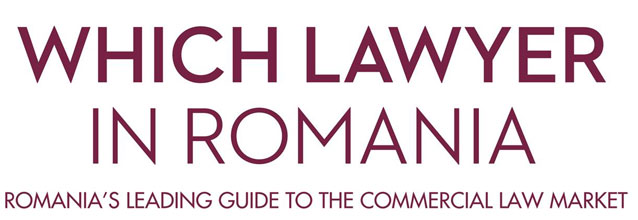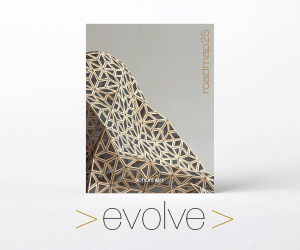
article by Adelina Iftime-Blagean (Counsel, Employment) and Andreea Stan (Senior Associate, Employment) at WOLF THEISS
Under Romanian law, employment contracts must be concluded in writing for validity purposes. This justifies the extra care companies invest in a legally binding execution of these documents, as well as the growing interest in E-signing employment documents in Romania.
While the core legislation regarding E-signature (eIDAS Regulations and Law 455/2001) was allowing the E-signing on all contracts requiring the written format for validity purposes (therefore including employment contracts), though indeed only in the format of the qualified E-signature, some say that the electronic execution of employment contracts was officially recognized in the employment legislation via GEO 36/2021 amending the Labor Code as of May 2021. Prior to this "official recognition" most employers preferred the traditional approach of signing in ink (despite any "headaches" associated with this approach, especially concerning cross-border retention), while few used E-signing for employment contracts (most of the times when it comes to retention of high professionals who already owned a qualified E-signature). A minority of employers took advantage of the lack of express interdiction and signed contracts in counterparts where the employee signed in wet ink signature and the employer electronically, with qualified E-signature. While we cannot fully endorse this lastly described practice from a legal perspective, let's face it: it has some cool practical advantages.
With less physical contact and a move towards more flexibility in a working environment, the Romanian legislator proposed a solution: GEO 36/2021. This piece of legislation was intended to bring additional flexibility in terms of execution of the employment documents. As it turned out, however, it introduced legal requirements in addition to those under the eIDAS Regulations and severely limited the de facto use of electronic signature in this area. It basically created a standstill surrounding use of electronic signature in employment relations at the time.
On 25 July 2021, Law 208/2021 amending and supplementing GEO 36/2021 entered into force. Law 208/2021 intends to partially eliminate the previously introduced legal and technical requirements and to simplify the use of electronic signature in employment relations.
Recent changes:
Law 208/2021 implements two main changes:
- elimination of additional formalities (electronic time stamp and electronic seal) upon electronic execution of employment contracts; and
- more flexibility when executing other employment documents.
We include below a comparative analysis of these changes:
|
|
Before (GEO 36/2021 regime) |
Present (Law 208/2021 regime) |
|
Employment contracts |
Advanced e-signature + electronic time stamp or Qualified e-signature (QES) + qualified time stamp + qualified electronic seal |
Advanced e-signature or QES |
|
The execution rules above apply to employment contracts and addenda |
The execution rules above apply to employment contracts, addenda, consensual suspension documents and consensual termination documents |
|
|
The parties must agree to the electronic execution |
Unchanged |
|
|
Requirement for symmetry, i.e. execution in counterparts (one party in wet ink and one party electronically) not possible |
Unchanged |
|
|
Other employment documentation (in principle unilateral documents) |
Advanced e-signature + electronic time stamp or Qualified e-signature (QES) + qualified time stamp + qualified electronic seal |
|
|
The rules for the use of e-signatures must be detailed in the collective bargaining agreement or the internal regulations |
Unchanged |
Technical clarifications:
As legal experts, the technical subtilities sometimes elude us. However, to be able to fully understand the changes to the Labor Code, we collected intelligence from providers of electronic signature and here's what we found out:
- The time stamp and the electronic seal are indeed separate products, in addition to the standard digital content of the e-signature products (advanced, respectively qualified). The changes brought by GEO 36/2021 were therefore indeed confusing and inefficient.
- The (qualified) electronic seal is the equivalent of the company stamp - the link is to the organization and not the actual signatory on behalf of the organization.
- The advanced E-signature is rather problematic since the technical conditions and criteria set out by art. 26 EIDAS are not clear and precise. Two options are available at this point: (i) the provider issues the product as being an advanced E-signature and warrants that the conditions are met; or (ii) the provider issues a (simple) signature and the user/client undertakes the additional burden to effectively link a certain individual to the signature (e.g. via internal policies). The second option sometimes leaves much of the duty of proof to the person using the signature or to the person alleging the signature is valid, which can create practical difficulties to say the least. Therefore, as the product is not standardized, many providers prefer not to offer it and there may be limited offer on the market.
Where do we stand now?
- The main advantage of Law 208/2021 is in our view the possibility granted to companies to now use (simple) electronic signatures or the electronic seal for signing or validating the huge amount of "paperwork" required in Romania for HR management. In our view, this provision applies mainly to the unilateral documents issuing from employers but may very well apply (e.g. via rules included in the Internal Regulations of a company) also to the documents originating from the employees, such as various types of consents or data filled in various electronic tools. This becomes a recognition of a practice used since many years ago by employers which turned to securing employee consent via various IT tools, apps and platforms.
- Prior to GEO 36/2021 and Law 208/2021, parties could only use qualified E-signature for the valid execution of an employment contract (due to the ad validitatem requirement under the Labor Code). Now parties can also use advanced e-signatures. At the same time, from a practical perspective (availability of the product, cost vs. benefits analysis) it may be that qualified E-signature stays at the top of the employers' preferences when discussing E-signing contracts.
- The use of symmetric signatures remains an issue. In order to sign employment contracts electronically, the employer will in fact need to procure electronic signatures for its employees. We anticipate that, at least for a while, employment contracts will mainly continue to be signed with wet ink signatures.



 August 12, 2021 13:29
August 12, 2021 13:29 










